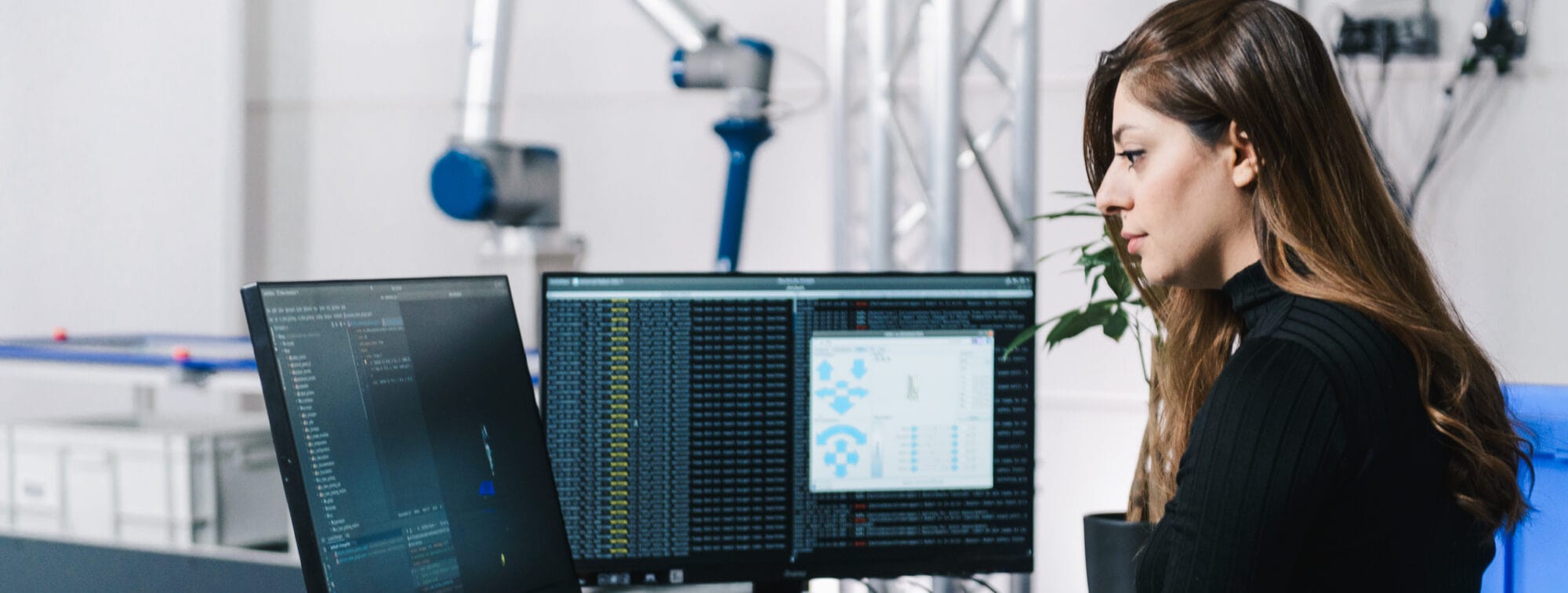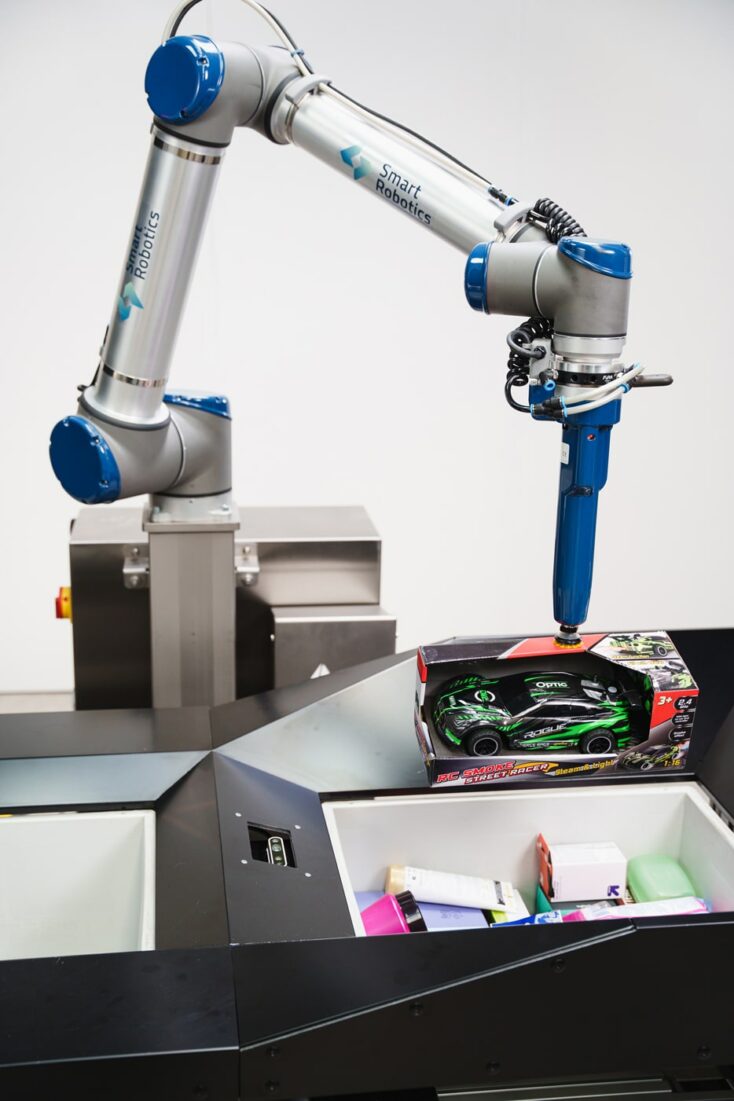How to realize safe collaboration with cobots
Cobots or collaborative robots have been on the market for a while, working together with people without the need for a fence to secure safety. Still, more than 99% of the robots are working within a fenced area. Great advantages of working with cobots are less required floor space and the ability of humans to help the cobots with difficult tasks. But how are we able to guarantee the safety of the operators when they work with and around cobots without a security fence?
Guaranteeing safety for collaborative robots – cobots in short – is defined in the ISO standards, requiring that contact between human and robot shall not result in pain or injury. Cobots typically guarantee this by power and force limiting through inherent design and control.
Power and force limits of cobots
There are multiple ways to limit power and force, but all of them boil down to measuring the moment of impact and stopping the robot as quickly as possible in such a situation. Until the robot has stopped and is de-energized, it should not have exceeded force and power limits, as defined in the available standards. To accomplish this, cobots typically have low inertia (low moving mass) and move at limited speeds.
Typically, a cobot including an object it is holding weighs up to 50 kg and moves at a maximum speed of 1.5 m/s. Higher values make it hard to stop the robot, if it hits an operator, without bruising the operator. Cobots with higher mass exist, but these have to move at lower speed. In addition to force and power limits, the cobot’s (and gripper’s) geometry needs to be properly designed. It should have rounded edges and no clamping possibilities near the joints.
The most common way to control the power and force of a cobot is through measuring the force applied to the environment, derived from the motor current that drives the robot joints. The advantage of this measurement is that the force on the product the cobot is holding is measured indirectly as well. A system using only a sensitive skin would not be able to measure this. However, note that this means that the robot should be able to distinguish an undesired force from a desired force when holding an object. Therefore, when picking up a box of 10 kg, the robot should be told that it is picking up a box of 10 kg. This way, it can correct its safety setting for this desired force.
Quasi-static vs. transient contact with a cobot
The cobot’s safety PLC continuously monitors speed and force, but it is up to the robot integrator to make sure that the speed and force limit settings are correct for the application. Hence, the integrator needs to consider two types of physical contact: quasi-static and transient.
- Quasi-static contact addresses situations of clamping, for which maximum permissible pressure and force are defined for each part of the human body in the TS 15066 ISO standard. E.g. the palm of a person’s hand is allowed to be exerted with a maximum pressure of 260 N/cm2 and a maximum force of 140 N.
- Transient contact addresses situations in which the robot hits the operator with a short impact. For this type of contact, maximum permissible pressure and force are defined for each part of the human body as well. These values are typically twice as large as the maximum values for the quasi-static contact.
Safety analysis of a cobot application
There are two ways to determine whether a robot application fulfills these safety requirements:
- By measuring pressure and force on all critical parts and situations using a certified tool. There are companies that provide such tools, mostly combined with a consultancy service executing the measurement.
- Through careful theoretical analysis of the given system. The TS 15066 standard provides a set of formulas that can be applied to derive maximum speed and torque values for the robot.
In practice, integrators use a set of rules of thumb to realize safe designs. E.g. by restricting every mechanical part to have curved corners with a radius of at least 5 mm and by limiting the robot’s speed to 1,5 m/s and its force to 130N, the majority of safety issues is tackled.
Protecting the head while working with cobots
A difficult part in each safety analysis is possible contact with the head of an operator. The standards do not give practical advice on this topic. One way of dealing with this is a zero-risk policy, in which the cobot is typically fenced off to prevent contact with the head. However, this diminishes all advantages and flexibility that a cobot gives. One could then better use a standard industrial robot at higher speeds. Hence, most integrators choose to use common sense to analyze this risk. They position the robot in such a way that contact with the head is prevented as much as possible. In addition, situations exist where the speed of the robot is reduced when an operator is detected nearby, e.g. by using a safety scanner or pressure sensitive mat. This way, the advantages of using a cobot still apply.
In the end, safety standards help us as a guide to a safe implementation, but common sense is always one of the most important tools to use. Just wonder if you are willing to close your eyes and move in the area of an operational cobot. If you doubt this, then you should consider your safety design again to provide optimal performance.


